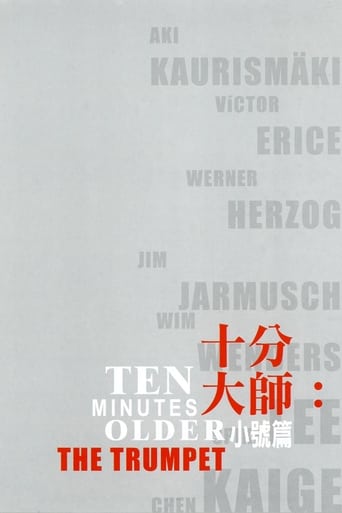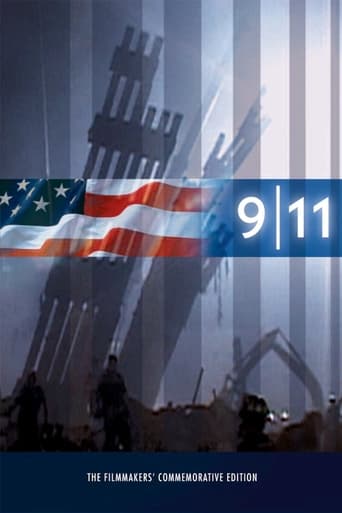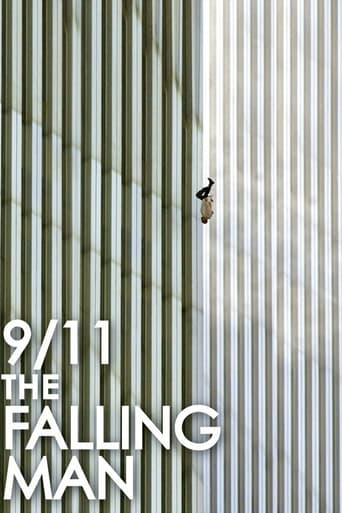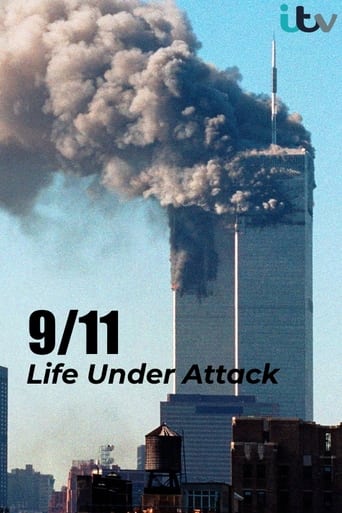Best movies like Handicapped Future
A unique, carefully handpicked, selection of the best movies like Handicapped Future Starring Rolf Illig, and more. If you liked Handicapped Future then you may also like: Werner Herzog Eats His Shoe, Wheel of Time, No One Will Play with Me, Nomad: In the Footsteps of Bruce Chatwin, Jag Mandir and many more popular movies featured on this list. You can further filter the list even more or get a random selection from the list of similar movies, to make your selection even easier.
A documentary by Werner Herzog exploring the different treatment accorded to the disabled in Germany and the USA.
You may filter the list of movies on this page for a more refined, personalized selection of movies.
Still not sure what to watch click the recommend buttun below to get a movie recommendation selected from all the movies on this list
Wheel of Time
Wheel of Time is Werner Herzog's photographed look at the largest Buddhist ritual in Bodh Gaya, India.
No One Will Play with Me
A darkly humorous short documentary about a preschool-age boy ostracised from interactions with his classmates until a girl who has become interested in his pet crow provides the link to social acceptance.
Nomad: In the Footsteps of Bruce Chatwin
When Bruce Chatwin was dying of AIDS, his friend Werner Herzog made a final visit. As a parting gift, Chatwin gave him his rucksack. Thirty years later, Herzog sets out on his own journey, inspired by Chatwin’s passion for the nomadic life, uncovering stories of lost tribes, wanderers and dreamers.
Jag Mandir
Jag Mandir is a quiet and often overlooked film in the vast oeuvre of Werner Herzog. Apparently, 20 hours of footage was shot that covered the whole fest and the film hardly presents us a twentieth of that. A native walking into the film in between may well fail to immediately realize that it is his country that is being shown and these are figures from the mythology of various sections of his nation.
Bells from the Deep
A group of pilgrims lie down on the thin ice of the lake Svetloyar and begin to look for the city of Kitesh. According to the legend, God saved the city from the Mongolian prince Batyi's soldiers by letting it sink to the bottom of the lake. If you listen carefully you can hear the bells of the Kitesh cathedral toll deep down.
Cave of Forgotten Dreams
Werner Herzog gains exclusive access to film inside the Chauvet caves of Southern France, capturing the oldest known pictorial creations of humankind in their astonishing natural setting.
Signs of Life
During World War II, three German soldiers are withdrawn from combat when one of them, Stroszek, is wounded. They are assigned to a small coastal community on the Greek island of Kos while Stroszek recuperates. The men become increasingly stir crazy in their uneventful new assignment. Stroszek eventually goes mad.
The Great Ecstasy of Woodcarver Steiner
A study of the psychology of a champion ski-flyer, whose full-time occupation is carpentry.
Grizzly Man
Werner Herzog's documentary film about the "Grizzly Man" Timothy Treadwell and what the thirteen summers in a National Park in Alaska were like in one man's attempt to protect the grizzly bears. The film is full of unique images and a look into the spirit of a man who sacrificed himself for nature.
Heart of Glass
A small Bavarian village is renowned for its "Ruby Glass" glass blowing works. When the foreman of the works dies suddenly without revealing the secret of the Ruby Glass, the town slides into a deep depression, and the owner of the glassworks becomes obssessed with the lost secret.
How Much Wood Would a Woodchuck Chuck
A documentary short examining the language and performance of auctioneering, filmed at the World Livestock Auctioneer Championship in Pennsylvania.
Into the Abyss
We do not know when and how we will die. Death Row inmates do. Werner Herzog embarks on a dialogue with Death Row inmates, asks questions about life and death and looks deep into these individuals, their stories, their crimes.
Land of Silence and Darkness
Through examining Fini Straubinger, an old woman who has been deaf and blind since her teens, and her work on behalf of other deaf-blind people, this film shows how the deaf-blind struggle to understand and accept a world from which they are almost wholly isolated.
Last Words
Early short by Werner Herzog shot while being on location in Greece shooting "Lebenszeichen".
Lessons of Darkness
Shot in documentary style from the perspective of an almost alien observer, the film is an exploration of the ravaged oil fields of post-Gulf War Kuwait. An effective companion to his earlier film Fata Morgana, Herzog again perceives the desert as a landscape with its own voice, as he glides over seas of oil, geyser-like infernos, monstrous smoke plumes and ashen roadways. With musical accompaniment by Wagner, Prokofiev and Pärt to boot, he observes the soot-covered creatures allured by the blaze.
Little Dieter Needs to Fly
In 1966, Dieter Dengler was shot down over Laos, captured, and, down to 85 pounds, escaped. Barefoot, surviving monsoons, leeches, and machete-wielding villagers, he was rescued. Now, near 60, living on Mt. Tamalpais, Dengler tells his story: a German lad surviving Allied bombings in World War II, postwar poverty, apprenticed to a smith, beaten regularly. At 18, he emigrates and peels potatoes in the U.S. Air Force. He leaves for California and college, then enlistment in the Navy to learn to fly. A quiet man of sorrows tells his story: war, capture, harrowing conditions, escape, and miraculous rescue. Where did he find the strength; how does he now live with his memories?
My Best Fiend
A film that describes the love-hate relationship between Werner Herzog and Klaus Kinski, the deep trust between the director and the actor, and their independently and simultaneously hatched plans to murder one another.
Pilgrimage
Accompanied only by music the film alternates between shots of pilgrims near the tomb of Saint Sergei in Sergiyev Posad, Russia and pilgrims at the Basilica of Guadalupe in Mexico.
Portrait: Werner Herzog
An autobiographical short film by Werner Herzog made in 1986. Herzog tells stories about his life and career. The film contains excerpts and commentary on several Herzog films, including Signs of Life, Heart of Glass, Fata Morgana, Aguirre, the Wrath of God, The Great Ecstasy of Woodcarver Steiner, Fitzcarraldo, and the Les Blank documentary Burden of Dreams. Notable is footage of a conversation between Herzog and his mentor Lotte Eisner, a photographer. In another section, he talks with mountaineer Reinhold Messner, in which they discuss a potential film project in the Himalayas to star Klaus Kinski.
Tokyo-Ga
German director Wim Wenders made this documentary in which he tries to explore the Tokyo that was depicted in the films of Yasujiro Ozu. When Wenders visits Tokyo for the first time, he finds a very different city, one with a booming fascination with technology that often clashes with the traditional elements of Japanese culture. Wenders also interviews Ozu's cinematographer, Yuharu Atsuta, and Chishu Ryu, an actor who frequently collaborated with Ozu.
Wings of Hope
Werner Herzog returns to the South American jungle with Juliane Koepcke, the German woman who was the sole survivor of a plane crash there in 1971. They find the remains of the plane and recreate her journey out of the jungle.
Gesualdo: Death for Five Voices
Works, legend and murders of Carlo Gesualdo, a notorious Italian composer and murderer from 16th century.
The Dark Glow of the Mountain
Werner Herzog follows mountaineers Hans Kammerlander and Reinhold Messner during their expedition into climbing the Gasherbrum mountains, which has some of the most difficult peaks to be conquered, and they'll do it without the use of oxygen tanks. Herzog also takes some time to hear about their past experiences with other mountains, their personal tragedies and the reasons why they are so involved with such activity.
Wodaabe: Herdsmen of the Sun
Herzog's documentary of the Wodaabe people of the Sahara/Sahel region. Particular attention is given to the tribe's spectacular courtship rituals and 'beauty pageants', where eligible young men strive to outshine each other and attract mates by means of lavish makeup, posturing and facial movements.
God's Angry Man
The documentary follows Gene Scott, famous televangelist involved with constant fights against FCC, who tried to shut down his TV show during the 1970s and '80s, and even argues with his viewers, complaining about their lack of support by not sending enough money to keep going with the show.
Ballad of the Little Soldier
Ballad of the Little Soldier is a 1984 documentary film about child soldiers in Nicaragua.
The Transformation of the World Into Music
This film was prepared as a introduction to a series of opera broadcasts on German television. It depicts the behind-the-scenes manoeuvrings in preparation for the annual opera festival in Bayreuth.
The Flying Doctors of East Africa
The Flying Doctors of East Africa (German: Die Fliegenden Ärzte von Ostafrika) is a 1969 documentary film by Werner Herzog about the "flying doctors" service of the African Medical and Research Foundation in Tanzania, Kenya, and Nairobi.
Huie's Sermon
Reverend Huie Rogers is a preacher at the Bible Way Church of Our Lord Jesus Christ in Brooklyn. He is the topic of this short film, during which launches into an epic call-and-response denunciation of human hubris, greed, corruption and failure. The use of lengthy shots present it less like a sermon and more a performance, and induce an almost trance-like state.
Nosferatu – Ein Film wie ein Vampir
From Murnau to Herzog, and until modern incarnations, a mischievous exploration of a cinematographic legendary character, with Nosferatu himself as a guide...
To the End of the World... and Then a Little Bit Further
A documentation about Werner Herzog's motif to do movies.
Ten Minutes Older: The Trumpet
Ten Minutes Older is a 2002 film project consisting of two compilation feature films entitled The Trumpet and The Cello. The project was conceived by the producer Nicolas McClintock as a reflection on the theme of time at the turn of the Millennium. Fifteen celebrated film-makers were invited to create their own vision of what time means in ten minutes of film.








































Werner Herzog Eats His Shoe
Directors Werner Herzog and Errol Morris make a bet which results in Herzog living up to his promise that he would eat his shoe if Errol Morris ever completed the film Gates of Heaven.